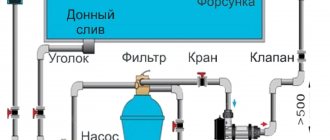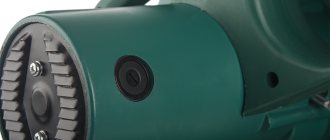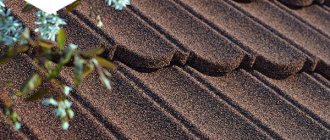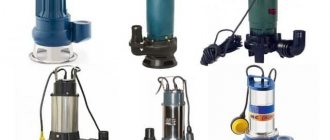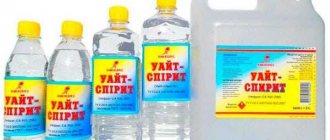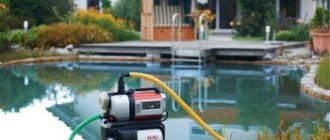The onset of cold weather does not always end the summer season in the garden. In private homes, as a rule, work is in full swing all year round. Often the home owner has the problem of choosing a hose made of frost-resistant materials that will not break in the cold and will last for quite a long time. This article will discuss such products and the subtleties of their selection.
Peculiarities
The frost-resistant water hose is distinguished by its ability to withstand low temperatures without damaging its own material. These products have many distinctive characteristics, thanks to which frost-resistant hoses are very popular among buyers. For example, they are characterized by reliability in operation and are resistant to mechanical damage (impact), pressure, and abrasive wear. In addition, such products, depending on the variety, may be resistant to UV radiation and the effects of various chemical compounds.
These are particularly flexible and durable hoses that do not change their structure at both low and high temperatures. Modifications can consist of three layers, through each of which the hose receives the necessary properties. They do an excellent job of pumping water. However, depending on the variety, not every product can withstand severe frost.
have proven themselves well , as well as suction modifications that can be laid underground. Such products are distinguished by the presence of reinforcing rings, while the material is resistant to the appearance and spread of rust. Hose materials may contain special additives that increase elasticity. This is what explains the resistance of hoses to cracking and bursting.
Tips for installation and operation
First of all, I would like to warn you that you should purchase any equipment and related materials for a well not in the markets, but in specialized stores. Even better - branded ones. Otherwise, you risk purchasing a counterfeit or a product whose actual characteristics do not correspond to those declared. This applies not only to pumps and hoses, but also to all kinds of fittings and fasteners. Otherwise, after some time you will have to decide how to get a hose out of the well that has fallen down due to corrosion of the clamp.
Advice. By the way, if this happens, we recommend using the “cat”. This is a special heavy metal hook attached to a long pole or tied to a strong rope.
Often, the intake hose is also used to supply water to the house, that is, from outside the well. If it is laid in the ground below the freezing level of the soil, no additional steps to insulate it are necessary. The surface supply is not insulated either. But in order for the hose not to freeze in winter, it must remain empty between water injections and there should be no air movement in it. What do I need to do:
- Lay the hose from the exit from the well to the entry into the house with a uniform slope of 3-5%, avoiding kinks and sagging - it is in such areas that water can accumulate.
- In order for the hose to lie flat and be securely fixed in a given position, it is enclosed in a wooden box or plastic pipe knocked together with your own hands, under which supports are placed to ensure the desired slope.
Winter water supply scheme
- To prevent warm air from the well from “walking” in an empty hose, forming frost inside it, it is necessary to equip a water seal. It is done simply: inside the room, the hose is laid with a deflection (sag), into which water will flow after turning off. It will serve as a barrier to air flow.
Purpose
Today, such products are used both for watering the garden and for other purposes.
- For example, some of the varieties are used for filling a skating rink , others are needed for carrying drinking water.
- Some options are used for pumping petroleum products , as well as various types of oils.
- You can use a frost-resistant hose to clean the sewer . In addition, these products have found application for firefighting needs , and they are also used by vacuum cleaners.
How to Buy the Right Drinking Water Hose
Have you decided to organize a supply of drinking water? Correct solution. When choosing a hose, you need to be very attentive to the following factors:
- wear resistance and service life;
- lightness and plasticity of the material;
- hardness level;
- product strength.
In addition to these technical characteristics, the product’s resistance to environmental influences is important: a high-quality product does not rot or become overgrown with algae, and does not fade when exposed to sunlight. As you understand, all these factors greatly affect the taste of water and human health.
In order to use the tube in the cold season, you need to choose a product that can withstand frosty weather.
If you decide to use a flexible tube rather than HDPE pipes to lift liquid from the well, be sure to take into account all the information provided. Never purchase products that are designed for watering or washing paths if you want to use the water for other purposes.
Criterias of choice
When going to the store to buy a frost-resistant hose for irrigation, you need to take into account a number of nuances. For example, key ones will be water pressure, frequency of use, and the size of the area being treated. Another key selection criterion will be the material of the product. Today there are different hoses on sale: rubber varieties are not afraid of frost, as well as durite modifications.
Rubber models are quite flexible and are not affected by negative temperatures. Some rubber hoses consist of four layers, which affects their weight. Such products can withstand a pressure of 40 bar, their service life sometimes reaches 20 years.
If it is not needed, you will have to store a heavy hose in the utility room.
Reinforced or three-layer analogues may have an inner layer of dark-colored PVC. This feature makes the hose resistant to UV rays. Algae does not grow inside such pipes. At the same time, the three-layer version is able to cope with a pressure of 33 bar. Under the influence of low temperature, the hose becomes rigid, but does not deform.
Tips for installation and operation
First of all, I would like to warn you that you should purchase any equipment and related materials for a well not in the markets, but in specialized stores. Even better - branded ones. Otherwise, you risk purchasing a counterfeit or a product whose actual characteristics do not correspond to those declared. This applies not only to pumps and hoses, but also to all kinds of fittings and fasteners. Otherwise, after some time you will have to decide how to get a hose out of the well that has fallen down due to corrosion of the clamp.
Advice. By the way, if this happens, we recommend using the “cat”. This is a special heavy metal hook attached to a long pole or tied to a strong rope.
Often, the intake hose is also used to supply water to the house, that is, from outside the well. If it is laid in the ground below the freezing level of the soil, no additional steps to insulate it are necessary. The surface supply is not insulated either. But in order for the hose not to freeze in winter, it must remain empty between water injections and there should be no air movement in it. What do I need to do:
- Lay the hose from the exit from the well to the entry into the house with a uniform slope of 3-5%, avoiding kinks and sagging - it is in such areas that water can accumulate.
- In order for the hose to lie flat and be securely fixed in a given position, it is enclosed in a wooden box or plastic pipe knocked together with your own hands, under which supports are placed to ensure the desired slope.
- To prevent warm air from the well from “walking” in an empty hose, forming frost inside it, it is necessary to equip a water seal. It is done simply: inside the room, the hose is laid with a deflection (sag), into which water will flow after turning off. It will serve as a barrier to air flow.
Characteristics of various modifications
On average, frost-resistant hoses can withstand a temperature range from -40 to +60°C. However, on sale you can find options with a lower negative temperature of no more than -20°C.
Structures can be ordinary or reinforced. The first options are not designed for long-term use: they usually last no more than 8 years. Reinforced analogues are equipped with an internal steel spiral, which increases not only strength, but also frost resistance.
The wall thickness of such modifications varies from 2.6 to 4.6 mm. Products may have additives in the form of plasticizers and have a smooth inner surface. Hoses designed for low temperature operation are suitable for year-round outdoor use.
They are not only resistant to crushing, but also resistant to the influence of chemical reagents, and are also unpretentious to various weather factors and sudden changes in temperature, and are suitable for supplying and pumping out water. The length of the coil of such products is 50 m, the internal diameter can be 25, 32, 40, 51, 63 and 102 mm. Some pressure-suction analogues are classified as super-heavy elastic categories. They are used in agriculture and sewage treatment systems.
Leading manufacturers
The greatest demand among consumers is for hoses from Elitech and Metabo.
The brands Belamos, Gilex, Kalibr, SIBRTECH, Gardena, Karcher have also proven themselves well.
The most popular are inch suction hoses for Marina-Speroni SET ASPIR MT7 pumping stations made in Italy. The cost of a seven-meter hose with the included filter mesh and check valve is about 1,500 rubles
The 1-inch Gardena pumping station hose is designed for use over a wide range of temperatures of the flowing liquid - from 10 to 50 degrees. The transparent hose with textile reinforcement is durable, its wall thickness is 3.5 mm. Able to withstand fairly high pressure.
Previous articles Next articles
Related Posts
- 25.03.2017.
What is a hydraulic accumulator and how it works
- 25.03.2017.
Replacing the membrane in the hydraulic accumulator
- 25.03.2017.
Which ones are suitable for filling a skating rink?
On sale you can find modifications equipped with powerful five-layer protection, which eliminates expansion, twisting of knots and the appearance of creases that are typical when the hose is used at extremely low temperatures. Such products include Wintech NTS with a diameter of ¾ inches, lengths of 25 and 50 m, characterized by double reinforcement . These modifications are quite popular among buyers, despite the fact that the lower temperature should not exceed -20°C.
These hoses ensure a guaranteed flow of water; inside they have a PVC layer that prevents the appearance and spread of microorganisms. The five-layer hose structure is designed to withstand a pressure of 30 bar.
In addition, for filling ice slides, frost-resistant Jeans NTS hoses with a diameter of 1⁄2 inches and a length of 25 and 50 m are purchased. They are characterized by five-layer protection, withstand pressure up to 30 bar, do not swell, and are characterized by constant stability, resistance to torsion and resistance to pressure.
General information
It should be said right away that there are two types of hoses:
- Watering;
- Fence.
For a well, it is necessary to use products of the second type. They are made with a certain requirement for the level of rigidity, since the product is subjected to quite large loads .
Their manufacturing technology involves reinforcement, which prevents compression of the hose. A similar situation can arise as a result of a decrease in pressure. In addition, reinforced hoses are more durable because they do not tear, unlike rubber and corrugated products.
Sleeve reinforced with steel spiral
,
The earliest vegetables that are not afraid of frost
February 27, 2017
The first warm days bring joy with the sun; all gardeners and summer residents are in the hot season of planting seeds for seedlings. I really want to get busy in the garden and start planting and growing something. However, you should not rush to plant seedlings in the ground. Young sprouts may not pass the test of night frosts. But there are strong and hardened crops that are not afraid of spring frosts; they can and should be planted as soon as the snow melts and the earth warms up a little.
1. Radishes and radishes can be planted in the first days after the ground has thawed. These crops can be grown several times per season, enjoying healthy root crops until late autumn. In order for radishes and radishes to bear fruit continuously, carry out the next sowing immediately after the first leaves of the first sowing appear.
You can read more about growing radishes in the article Growing Radishes.
2. The real record holder is sorrel. Tasty and healthy, sorrel begins to emerge right from under the snow. If there is no sorrel in your garden, you can plant it at any time and do not skimp on fertilizer when planting sorrel.
3. Lettuce seeds are usually sown before winter. But if you did not have time to do this, spring sowing is also possible. Lettuce is an unpretentious crop, and if you want to grow it all season long, simply renew the lettuce crops every two weeks. Lettuce seedlings will withstand frosts down to -2C, and even -6C during the ripening period.
No. 1. Defrosting the pipe using a hair dryer or blowtorch
If the outer part of the pipe, which is within reach, is frozen , then the task is greatly simplified. It is enough just to expose the frozen area to external heating, and for this you can use:
- hair dryer, regular or construction;
- heating cable;
- heating pad;
- electric blanket.
If the pipe is metal, then you can also use the following heat sources:
- gas-burner;
- blowtorch;
- homemade torch.
The principle is the same in all cases. Heat is applied to the frozen area. If it’s a heating pad, then it’s applied; if it’s a cable, it’s used to wrap it around the pipe and plugged into the network; if it’s a burner or blowtorch, then the flame is directed into the pipe area, but with a hairdryer, everything is clear. An old blanket or thick cloth can be placed over the heating pad, heating cable, and thermal blanket to help retain heat.
It is important to open the water tap before starting work so that thawed water can flow out of the pipe calmly. The heater or heating boiler is turned off during this time.
Avoid plastic hoses
Modern garden hoses are primarily made from polyvinyl chloride. Of the 21 hoses that were purchased by American environmentalists at the first store they came across, almost all were made of one type or another of plastic. But they often use stabilizers and organotin compounds, which cause diseases of the endocrine system. This subsequently leads to reproductive and hormonal disorders.
Heavy metals were detected in 7 of 21 randomly selected hoses. During the analysis, particles of antimony were found in 11 irrigation devices - a toxic substance that, at high concentrations in the body, can accumulate in the thyroid gland, causing its damage. Bromine was also detected in 2 hoses. Both of these substances are markers for flame retardants used in plastic hoses.
The dyes used in cheap garden hoses often contain heavy metals such as lead and cadmium.
The researchers then randomly selected 5 hoses to test for phthalates, chemicals added to PVC hoses to maintain their flexibility. These substances cause hormonal imbalances, lower IQ levels, and cause other behavioral problems in children. All five hoses contained some level of phthalates, and one of them even contained 18% of dangerous compounds.
No. 2. Defrosting using boiling water and a rag
The method is also suitable if the pipes are in the building and accessible . Of course, you can simply water the pipes with hot water, having previously placed containers to collect water, but it is much more effective to first wrap the pipes with rags, and only then give them a “hot shower”. The rag will absorb water, heat up and cause the pipes to be constantly exposed to heat. If there is only a small amount of rags, then it will need to be periodically moved along the pipe section. Don't forget to place a container to catch any water that won't be absorbed.
